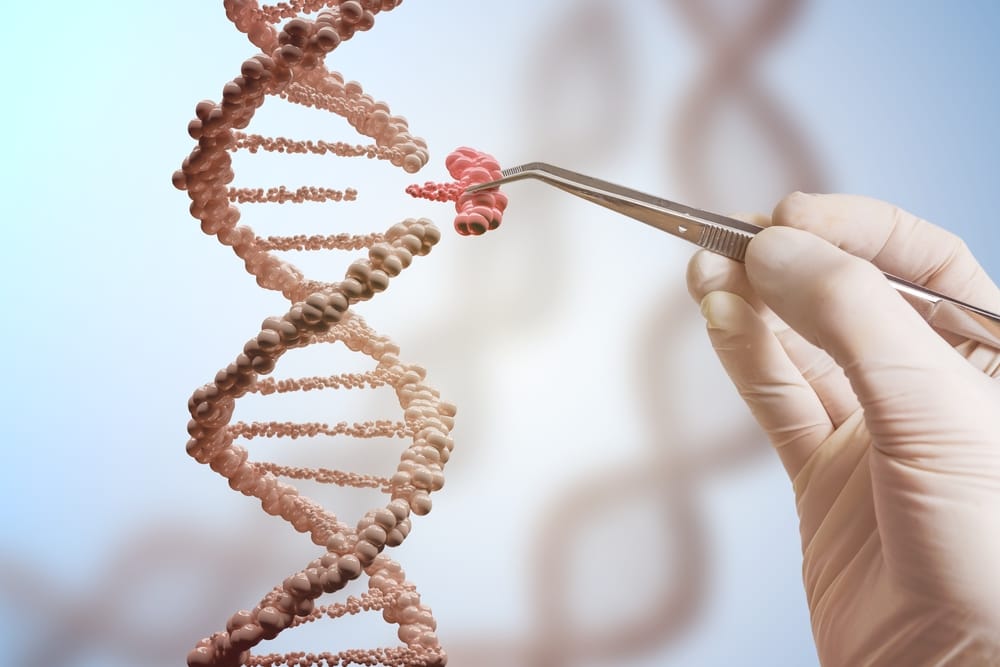There’s no “cure” for drug addiction because it’s a chronic disease and recovery is a lifelong process. But recent research suggests CRISPR gene editing (i.e. clustered regularly interspaced short palindromic repeats) could help scientists hone in on the genes behind substance use disorders. The hope is that these insights might spawn future research that could lower the chances of addictive behaviors in people who are genetically predisposed to substance abuse.
What Is CRISPR Gene-Editing?
CRISPR-Cas9 is a complex system, but here’s a basic explanation of how it works. It’s a gene-editing technology that allows scientists to alter a genome by adding, removing or altering parts of the DNA sequence. This has significant implications for the treatment of disease-causing genetic mutations. Experiments in animals using CRISPR gene-editing technology has generated several positive outcomes so far, including:
- Creating a “cancer-busting” gene that has shrunk tumors
- Eliminating the RNA virus in HIV
- Editing the genes involved in Huntington’s disease
- Inhibiting rapidly growing cancer cells through targeting a protein that enhances cell division
- Making code changes in fertility genes of mosquitos to help prevent the spread of mosquito-borne illnesses
CRISPR and Addiction: Are There Treatment Implications?
Addiction is a biopsychosocial condition that is thought to involve a combination of environmental, biological and emotional factors. While scientists have never pinpointed an “addiction gene,” they’ve come up with several research-based theories of suspected genetic culprits in substance abuse by comparing DNA between family members with histories of addiction, as well as genes tied to addiction in animals with their human counterparts. One theory that has gained a multitude of scientific support is the role the nuclear transcription factor CREB (i.e. cAMP response element-binding protein) plays in addiction. Research involving CREB, CRISPR and addiction was presented at Neuroscience 2017, the annual conference of the Society for Neuroscience. Lead study author Dr. Peter James Hamilton (Icahn School of Medicine at Mount Sinai) and his team of researchers used CRISPR technology in mice to pinpoint and modify the proteins thought to play a role in substance use disorders. In a press release for the Neuroscience 2017 presentation, Hamilton said, “Our findings illuminate which genes CREB turns on and how this gene activation contributes to the progression of drug addiction.” While the study results have not yet been published, research highlights that have implications for future CRISPR and addiction research include the following:
- The research supports previous studies indicating the cellular transcription factor, CREB is tied to addictive behaviors.
- A modification of CRISPR-Cas9 technology has the capability to target the “on” and “off” switch for genes in mice thought to fuel cocaine abuse and dependence.
- What most distinguishes this research from previous studies is the use of CRISPR technology to actually turn genes “on” or “off” using CREB, and then observing how it impacts the reward centers in the brains of mice that ingested cocaine.
- Researchers were able to determine which “addiction genes” CREB targets and how that process plays out in the overall progression of a substance use disorder.
- The research helped confirm the technical validity of the CRISPR gene-editing technology.
While “addiction proofing” the human brain is a long ways off, these findings give scientists and behavioral healthcare providers a sneak peek into the future of addiction treatment. To create more focused addiction therapies, it’s important for researchers to understand both the environmental factors and genetic processes that can fuel substance abuse.

